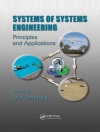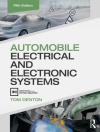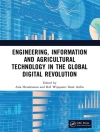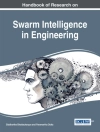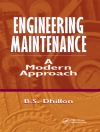- Detailed coverage of the latest research on plant physiology, including flowering and pollination in trees, apple fruit development and ripening;
- Reviews current best practice in tree training, pruning and thinning operations, including the use of growth regulators and new areas such as mechanisation and automation;
- Discusses the range of fungal and viral diseases affecting apples
Daftar Isi
Part 1 Plant physiology and breeding
1.Ensuring the genetic diversity of apples: Gayle M. Volk, USDA-ARS-CARR National Laboratory for Genetic Resources Preservation, USA;
2.The apple genome – harbinger of innovation for sustainable apple production: Amit Dhingra, Washington State University, USA;
3.Advances in understanding apple tree growth: rootstocks and planting systems: Dugald C. Close and Sally A. Bound, University of Tasmania, Australia;
4.Advances in understanding apple tree growth: the manipulation of tree growth and development: Dugald C. Close and Sally A. Bound, University of Tasmania, Australia;
5.Advances in understanding flowering and pollination in apple trees: Peter M. Hirst, Purdue University, USA;
6.Advances in understanding apple fruit development: A.N. Lakso and M. C. Goffinet, Cornell University, USA;
7.Evaluating and improving rootstocks for apple cultivation: G. Fazio, USDA-ARS/Cornell University, USA;
8.Advances in marker-assisted breeding of apples: K. Evans and C. Peace, Washington State University, USA;
Part 2 Cultivation techniques
9.Innovations in apple tree cultivation to manage crop load and ripening: Stefano Musacchi, Washington State University, USA; and Duane Greene, University of Massachusetts, USA;
10.Advances in soil and nutrient management in apple cultivation: G. H. Neilsen, D. Neilsen and T. Forge, Summerland Research and Development Centre Agriculture and Agri-Food Canada; and K. Hannam, Natural Resources Canada;
11.Mechanization and automation for apple production: Q. Zhang, M. Karkee and L. R. Khot, Washington State University, USA;
12.Sustainable approaches to control postharvest diseases of apples: W. J. Janisiewicz and W. M. Jurick II, USDA-ARS, USA;
13.Advances in postharvest handling and storage of apples: Christopher B. Watkins, Cornell University, USA;
Part 3 Diseases and pests
14.Pre- and postharvest fungal apple diseases: Wayne M. Jurick II, USDA-ARS, USA and Kerik D. Cox, Cornell University, USA;
15.Management of viruses and virus-like agents affecting apple production: Kenneth C. Eastwell, Washington State University, USA;
16.Bacterial diseases affecting apples: John Norelli, USDA-ARS, USA;
17.Sustainable arthropod management for apples: Elizabeth H. Beers, Washington State University, USA;
18.Advances in pest- and disease-resistant apple varieties: Markus Kellerhals, Agroscope, Switzerland;
Part 4 Sustainability
19.The economics of apple production: R. Karina Gallardo, Washington State University, USA; and Hildegard Garming, Thünen Institute of Farm Economics, Germany;
20.Consumer trends in apple sales: Desmond O’Rourke, Washington State University and Belrose Inc., USA;
21.Assessing the environmental impact and sustainability of apple cultivation: D. Granatstein, Washington State University, USA; and G. Peck, Cornell University, USA;
22.Growing organic apples in Europe: Jutta Kienzle, Independent Researcher, Germany; and Markus Kelderer, Research Station of Laimburg, Italy;
Tentang Penulis
Professor Chris Watkins is Herman H. Cohn Professor of Horticulture and Associate Dean at Cornell University and Director of Cornell Cooperative Extension. An internationally-renowned expert on postharvest physiology, and a Fellow of the American Society for Horticultural Science. He is the current Chair of the International Society for Horticultural Science (ISHS) Division for Postharvest and Quality Assurance, and a member of the editorial board of the journal Postharvest Biology and Technology.




